The Dominican Republic is located on the eastern five-eighths of Hispaniola in the Caribbean, sharing a land border with Haiti. It is the second-largest Caribbean nation by area after Cuba, encompassing 48,671 square kilometers. With an estimated population of 11.4 million in 2024, it is the second-most populous nation in the Antilles after Haiti. Its capital city, Santo Domingo, has a metropolitan population of approximately 3.6 million.
1902: Return of Short-Lived Governments
From 1902, short-lived governments became the norm in the Dominican Republic, with power being usurped by caudillos.
1902: Horacio Vásquez Presidency
Horacio Vásquez served as president of Dominican Republic from 1902-1903.
1902: Juan Isidro Jimenes Presidency
Juan Isidro Jimenes served as president of Dominican Republic from 1899-1902.
1905: Dominican Agreement for U.S. Administration of Customs
In 1905, the Dominican Republic and the United States signed an agreement for U.S. administration of Dominican customs.
1906: Agreement for 50-Year Arrangement
In 1906, an agreement was made to allow the US to administer Dominican customs for 50 years.
1907: Missionary Work
From 1896 to 1907 missionaries from the Episcopal, Free Methodist, Seventh-day Adventist and Moravians churches began work in the Dominican Republic.
1911: Assassination of President Ramón Cáceres
In 1911, President Ramón Cáceres was assassinated, leading to political instability and civil war.
1914: Political Deadlock and U.S. Ultimatum
In 1914, a political deadlock was broken after an ultimatum by U.S. President Wilson, leading to the election of a provisional president and later Juan Isidro Jimenes.
May 7, 1916: Jimenes Resigns
On May 7, 1916, President Jimenes resigned despite a U.S. offer of military aid, leading to the U.S. occupation of the Dominican Republic.
May 16, 1916: U.S. Marines Land
On May 16, 1916, U.S. Marines landed in the Dominican Republic, seizing the capital and other ports.
1916: U.S. Occupation
During the U.S. occupation of 1916, peasants known as Gavilleros attacked and killed both U.S. Marines and Arab vendors in the countryside.
1916: Volleyball Introduced
In 1916, volleyball was introduced to Dominican Republic by U.S. Marines.
1918: Expansion of the Dominican Education System
In 1918, the Dominican education system significantly expanded, with grass-roots support from local communities and assistance from Dominican and US officials.
1920: Establishment of Schools
Between 1918 and 1920, more than three hundred schools were established nationwide in Dominican Republic.
1920: Artistic Influences
Between 1920 and 1940 the art scene was influenced by styles of realism and impressionism.
October 1922: End of U.S. Government Rule
In October 1922, the U.S. government's rule ended in the Dominican Republic.
March 1924: Elections Held
In March 1924, elections were held, resulting in the victory of Horacio Vásquez.
July 13, 1924: Inauguration of Horacio Vásquez
On July 13, 1924, Horacio Vásquez was inaugurated as president, and the last U.S. forces left in September.
September 1930: Hurricane San Zenón
In September 1930, Hurricane San Zenón devastated Santo Domingo, causing 8,000 deaths, which allowed Trujillo to consolidate his power.
November 1930: Defeat of Cipriano Bencosme's Uprising
In November 1930, General Cipriano Bencosme's uprising was defeated, and he was killed near Puerto Plata.
1930: Trujillo Seizes Power
In 1930, General Rafael Trujillo seized power following a military revolt against the government of Vásquez.
1930: Trujillo's Dictatorship Begins
In 1930, Rafael Trujillo established his dictatorship in the Dominican Republic after a military revolt.
1932: Birth of Oscar de la Renta
Noted fashion designer Oscar de la Renta was born in the Dominican Republic in 1932.
1936: Distrito Nacional created
In 1936, the Distrito Nacional was created.
October 1937: Massacre of Haitians
In October 1937, Dominican troops murdered 10,000 to 15,000 Haitian men, women, and children along the Haitian-Dominican border under Trujillo's orders.
1937: Merengue Music Promotion
Between 1937 and 1950 merengue music was promoted internationally by Dominican groups like Billo's Caracas Boys, Chapuseaux and Damiron "Los Reyes del Merengue", Joseito Mateo, and others.
1940: Artistic Influences
Between 1920 and 1940 the art scene was influenced by styles of realism and impressionism.
1940: Immigration to Dominican Republic
From the mid-1800s until about 1940, Puerto Rican, and to a lesser extent Cuban immigrants, fled to the Dominican Republic due to poor economy and social unrest in their respective home countries. Before and during World War II, 800 Jewish refugees moved to the Dominican Republic.
1941: End of Customs Agreement
In 1941, Trujillo achieved the end of the 50-year customs agreement well before its expiration in 1956.
1946: Purchase of Military Aircraft and Warships
Between 1946 and 1949, the Dominican government purchased military aircraft and warships from the British government.
1947: Country Becomes Debt-Free
In 1947, under Trujillo, the Dominican Republic became debt-free.
1949: Purchase of Military Aircraft and Warships
Between 1946 and 1949, the Dominican government purchased military aircraft and warships from the British government.
1950: Merengue Music Promotion
Between 1937 and 1950 merengue music was promoted internationally by Dominican groups like Billo's Caracas Boys, Chapuseaux and Damiron "Los Reyes del Merengue", Joseito Mateo, and others.
1950: Population of Dominican Republic
In 1950, the Dominican Republic population was 2,380,000.
September 23, 1956: Ozzie Virgil Sr. debuts in MLB
On September 23, 1956, Ozzie Virgil Sr. became the first Dominican-born player in Major League Baseball (MLB).
1956: Expiration of Customs Agreement
The 50-year customs agreement with the US was meant to expire in 1956.
August 13, 1959: Seizure of C-47 Transport
On August 13, 1959, Fidel Castro seized a C-47 transport from the Dominican Republic carrying military advisors and supplies, leading to arrests in Cuba.
August 26, 1960: US Severs Diplomatic Relations
On August 26, 1960, the United States severed diplomatic relations with the Dominican Republic.
November 25, 1960: Murder of the Mirabal Sisters
On November 25, 1960, Trujillo's henchmen murdered three of the Mirabal sisters, also known as Las Mariposas (The Butterflies), who were conspiring to overthrow Trujillo.
1960: US Breaks with Trujillo
In 1960, the U.S. broke with Trujillo after Trujillo's agents attempted to assassinate Venezuelan president Rómulo Betancourt with a car bomb.
January 1961: US Suspends Exports
In January 1961, the United States suspended the export of trucks, parts, crude oil, gasoline, and other petroleum products to the Dominican Republic.
May 30, 1961: Assassination of Trujillo
On May 30, 1961, Trujillo was shot and killed by Dominican dissidents during a car chase.
May 31, 1961: Venezuela Arrests Coup Plotters
On May 31, 1961, Venezuela arrested individuals plotting to overthrow the government, with weapons traced back to the Dominican Republic.
November 18, 1961: US Warns Trujillo Family
On November 18, 1961, U.S. Secretary of State Dean Rusk warned that the US would not remain idle if the Trujillos attempted to reassert dictatorial domination.
1961: Assassination of Rafael Trujillo
In 1961, Rafael Trujillo was assassinated, ending his long-standing dictatorship.
1961: Emigration Wave Begins
In 1961, the first of three late-20th century emigration waves began after the assassination of dictator Trujillo, due to fear of retaliation by Trujillo's allies and political uncertainty in general.
January 4, 1962: OAS Lifts Sanctions
On January 4, 1962, the OAS lifted its sanctions on the Dominican Republic.
1962: Election of Juan Bosch
In 1962, Juan Bosch was elected as president of the Dominican Republic.
February 1963: Juan Bosch takes office
In February 1963, a democratically elected government under leftist Juan Bosch took office.
1963: Oscar de la Renta Designs Bearing His Own Label
By 1963, Oscar de la Renta had designs bearing his own label.
1963: Military Coup Against Bosch
In 1963, Juan Bosch was deposed in a military coup.
1963: Dominican Revolutionary Party in power
The Dominican Revolutionary Party was in power in 1963.
April 24, 1965: Second military coup
On April 24, 1965, a second military coup ousted the military-installed president Donald Reid Cabral. Pro-Bosch Constitutionalists maintained control of most of the capital despite attacks.
1965: US Military Occupation and Eased Travel Restrictions
In 1965, the United States began a military occupation of the Dominican Republic to end a civil war. Upon this, the U.S. eased travel restrictions, making it easier for Dominicans to obtain U.S. visas.
1966: Exodus Continues
From 1966 to 1978, the exodus continued, fueled by high unemployment and political repression.
1966: Balaguer's Authoritarian Rule Begins
In 1966, Joaquín Balaguer began his authoritarian rule, which lasted until 1978.
1966: Joaquín Balaguer wins elections
In 1966, Joaquín Balaguer won the elections after U.S. and OAS peacekeeping troops supervised them. Afterwards the troops left the country.
1966: Social Christian Reformist Party in power
The Social Christian Reformist Party was in power in 1966–78.
1971: Oscar de la Renta Becomes US Citizen
Oscar de la Renta became a US citizen in 1971.
1973: Bosch founds the Dominican Liberation Party
In 1973, Juan Bosch founded the Dominican Liberation Party (PLD) after leaving the PRD.
1978: Exodus Continues
From 1966 to 1978, the exodus continued, fueled by high unemployment and political repression.
1978: Antonio Guzmán Fernández becomes president
In 1978, Antonio Guzmán Fernández, of the Dominican Revolutionary Party (PRD), succeeded Balaguer to the presidency.
1978: Transition to Representative Democracy
Since 1978, the Dominican Republic has been transitioning towards a representative democracy.
1978: Dominican Revolutionary Party in power
The Dominican Revolutionary Party was in power in 1978–86.
August 1979: Hurricane David hits the Dominican Republic
In August 1979, Hurricane David hit the Dominican Republic, causing over $1 billion in damage, leaving upwards of 2,000 people dead and 200,000 homeless.
1982: Salvador Jorge Blanco wins presidency
In 1982, Salvador Jorge Blanco won the presidency under the Dominican Revolutionary Party (PRD).
1985: Liberalization of exchange rate
By 1985, the exchange rate to the U.S. dollar was liberalized.
August 1986: Exchange rate to U.S. dollar
In August 1986, the exchange rate to the U.S. dollar stood at 2.70 pesos per dollar.
1986: Balaguer regains presidency
In 1986, Balaguer regained the presidency.
1986: Social Christian Reformist Party in power
The Social Christian Reformist Party was in power in 1986–96.
1990: Balaguer re-elected
In 1990, Balaguer was re-elected as president.
1990: Economic turmoil
In the late 1980s and 1990, the Dominican Republic experienced economic turmoil, with GDP falling by up to 5% and consumer price inflation reaching 100%.
1992: Start of Economic Growth Period
From 1992, the Dominican Republic began a period of rapid economic growth, averaging 5.3% real GDP growth until 2018.
1992: Columbus Lighthouse completed
In 1992, the massive Columbus Lighthouse was completed during a later tenure of Joaquín Balaguer.
1993: Exchange rate to U.S. dollar
In 1993, the exchange rate to the U.S. dollar stood at 14.00 pesos.
1994: Flawed elections bring international pressure
In 1994, flawed elections brought international pressure, leading Balaguer to schedule another presidential contest.
1996: Balaguer schedules presidential contest
In 1996, Balaguer responded to international pressure by scheduling another presidential contest.
1996: End of Balaguer's Rule
In 1996, Joaquín Balaguer's rule came to an end.
1996: Leonel Fernández achieves first win for PLD
In 1996, Leonel Fernández, with the support of Joaquín Balaguer, achieved the first-ever win for the Dominican Liberation Party (PLD).
1996: Free and Fair Elections
Since 1996, international observers have found that presidential and congressional elections have been generally free and fair.
1996: Dominican Liberation Party in power
The Dominican Liberation Party was in power in 1996–2000.
1998: Hurricane Georges
In 1998, Hurricane Georges was the last major hurricane that struck the Dominican Republic.
2000: Hipólito Mejía wins election
In 2000, Hipólito Mejía of the PRD won the election.
2000: Exchange rate to U.S. dollar
In 2000, the exchange rate to the U.S. dollar stood at 16.00 pesos.
2000: Phone line subscribers
In the year 2000, there were 1.6 million phone line subscribers (land and cell users).
2000: Urban population growth rate
Per the United Nations, the urban population growth rate for 2000–2005 was 2.3%.
2000: Dominican Revolutionary Party in power
The Dominican Revolutionary Party was in power in 2000–04.
2001: Santo Domingo Province split off
In 2001, the new Santo Domingo Province split off from the Distrito Nacional.
2002: Economy enters recession
Until 2002, the Dominican Republic entered a period of growth and declining inflation until after which the economy entered a recession.
2003: Haiti Poverty and Illiteracy
In 2003, 80% of all Haitians were poor (54% living in abject poverty) and 47.1% were illiterate.
2003: Baninter fraud devastates economy
In 2003, the Baninter fraud had a devastating effect on the Dominican economy, with GDP dropping by 1% and inflation ballooning by over 27%.
2003: Dominican Republic participates in invasion of Iraq
In 2003, the Dominican Republic participated in the US-led coalition during the invasion of Iraq, suffering no casualties.
2004: Cocaine Smuggling
In 2004, it was estimated that 8% of all cocaine smuggled into the United States had come through the Dominican Republic.
2004: Dominican Liberation Party in power
The Dominican Liberation Party was in power in 2004–2020.
2005: United Nations Subcommittee Report
According to the 2005 Annual Report of the United Nations Subcommittee on Human Development in the Dominican Republic, the country is ranked No. 71 in the world for resource availability.
2005: Criticism of Haitian Expulsions
In 2005, Dominican President Leonel Fernández criticized collective expulsions of Haitians as having taken place "in an abusive and inhuman way".
2005: Urban population growth rate
Per the United Nations, the urban population growth rate for 2000–2005 was 2.3%.
2006: Frank Báez Wins Santo Domingo Book Fair First Prize
In 2006, Frank Báez won the Santo Domingo Book Fair First Prize.
2006: Population Growth
The annual population growth rate for 2006–2007 was 1.5%.
2007: Population Density
In 2007, the population density in Dominican Republic was 192 per km (498 per sq mi), and 63% of the population lived in urban areas.
2008: Gabriel Mercedes wins Olympic silver medal
In 2008, Gabriel Mercedes won an Olympic silver medal in taekwondo.
2008: Junot Díaz Wins Pulitzer Prize
In 2008, Junot Díaz won the Pulitzer Prize for Fiction for his novel "The Brief Wondrous Life of Oscar Wao".
2008: Fernández elected for third term
In 2008, Leonel Fernández was elected for a third term as president.
June 2009: Phone line subscribers
In June 2009, there were more than 8 million phone line subscribers in the D.R., representing 81% of the country's population.
November 2009: Gender Perspective
In November 2009, the Dominican Republic became the first Latin American country to pledge to include a "gender perspective" in every information and communications technology (ICT) initiative.
April 2010: Teenagers Murder Taxi Drivers
In April 2010, five teenagers murdered two taxi drivers and killed another five by forcing them to drink drain-cleaning acid.
September 24, 2010: Sentencing of Teenagers
On September 24, 2010, the teenagers who murdered taxi drivers in April were sentenced to prison terms of three to five years.
2010: Dominican Immigration to Puerto Rico
As of 2010, there was a growing Dominican immigration to Puerto Rico, with nearly 70,000 Dominicans living there.
2010: Population Demographics
In 2010, 31.2% of the Dominican Republic's population was under 15 years of age, with 6% over 65 years of age.
2010: Santo Domingo Population
In 2010, the capital city Santo Domingo had a population of 2,907,100.
2010: 2010 Census
The 2010 Census registered 311,969 Haitians; 24,457 Americans; 6,691 Spaniards; 5,763 Puerto Ricans; and 5,132 Venezuelans.
2012: Santo Domingo Metro Ridership
In 2012, 30,856,515 passengers rode the Santo Domingo Metro.
2012: Danilo Medina elected president
In 2012, Danilo Medina of the PLD was elected president.
2012: Murder Rate
In 2012, the Dominican Republic had a murder rate of 22.1 per 100,000 population, totaling 2,268 murders.
2012: Dominican Government Survey of Immigrants
In 2012, the Dominican government made a survey of immigrants in the country and found that there were 329,281 Haitian-born and 25,814 U.S.-born (excluding Puerto Rican-born).
2012: Dominican Descent in the U.S.
In 2012, there were approximately 1.7 million people of Dominican descent in the U.S., counting both native- and foreign-born.
April 2013: Second line of Santo Domingo Metro opens
In April 2013, the second line of the Santo Domingo Metro opened.
August 2013: Santo Domingo Metro Length
As of August 2013, the length of the Santo Domingo Metro was 27.35 kilometres (16.99 mi).
2013: Remittances in Dominican Republic
In 2013, remittances in Dominican Republic were US$3333 million.
2013: Dominican Republic wins World Baseball Classic
In 2013, the Dominican Republic's baseball team had an undefeated record en route to winning the World Baseball Classic.
2013: Government Investment in Health Services
In 2013–2016, the government of the Dominican Republic invested a total of $16 billion pesos in health services offered to foreign patients.
October 20, 2014: Death of Oscar de la Renta
Oscar de la Renta died of complications from cancer on October 20, 2014.
2014: Religious Demographics
As of 2014, 57% of the Dominican Republic population (5.7 million) identified as Roman Catholics and 23% (2.3 million) as Protestants.
2014: Remittances Increased
In 2014, remittances in Dominican Republic increased to US$4571.30 million from US$3333 million in 2013.
2014: Peak GDP Growth
In 2014, the Dominican Republic experienced a GDP growth of 7.3%, the highest in the Western Hemisphere.
2014: Santo Domingo Metro Ridership Increase
In 2014, with both lines opened, ridership increased to 61,270,054 passengers.
2015: Continued High GDP Growth and Gold Production
In 2015, the Dominican Republic continued its high GDP growth at 7.0% and produced 31 metric tonnes of gold.
2015: Population Projection
The projected population for the year 2015 was 10,121,000.
2016: Global Slavery Index
According to the 2016 Global Slavery Index, an estimated 104,800 people are enslaved in the modern day Dominican Republic.
2016: Reversal of Immigration Trends
As of 2016, Dominican immigration trends have reversed because of Puerto Rico's economic crisis.
2016: Government Investment in Health Services
In 2013–2016, the government of the Dominican Republic invested a total of $16 billion pesos in health services offered to foreign patients.
2016: Danilo Medina re-elected president
In 2016, Danilo Medina of the PLD was re-elected president.
2016: Joint Elections
Starting in 2016, elections are held jointly after a constitutional reform.
2017: Haiti GDP
Haiti's per capita GDP (PPP) was $1,800 in 2017, or just over one-tenth of the Dominican figure.
2017: Dominican Republic Population Estimate
In 2017, the Dominican government estimated the Dominican Republic had a population of 10,189,895, with 847,979 being immigrants or descendants of recent immigrants and 9,341,916 being ethnic Dominicans.
2017: Second Survey of Foreign Population
In the second half of 2017, a second survey of foreign population was conducted in the Dominican Republic, estimating the total population at 10,189,895, of which 9,341,916 were Dominicans with no foreign background.
September 2018: Exchange rate to U.S. dollar
As of September 2018, the exchange rate was 50.08 pesos per dollar.
2018: End of High Economic Growth Period
By 2018, the Dominican Republic had sustained an average real GDP growth rate of 5.3% since 1992.
2018: Santo Domingo Named Culinary Capital
In 2018, Santo Domingo was named a Culinary Capital of the Caribbean by the Ibero-American Academy of Gastronomy.
2018: Dominican Republic signs UN treaty
In 2018, the Dominican Republic signed the UN treaty on the Prohibition of Nuclear Weapons.
2019: Santo Domingo Named Culinary Capital
In 2019, Santo Domingo was named a Culinary Capital of the Caribbean by the Ibero-American Academy of Gastronomy.
2019: Global Innovation Index Ranking
In 2019, the Dominican Republic was ranked 87th in the Global Innovation Index.
2020: Ceylin del Carmen Alvarado Wins Championship
In 2020, Ceylin del Carmen Alvarado, from Dominican Republic, won the World and European Cyclo-cross championship.
2020: Luis Abinader wins election
In 2020, Luis Abinader won the election, marking the end to 16 years in power of the centre-left Dominican Liberation Party (PLD).
2020: Birth and Death Rates
In 2020, the Dominican Republic had an estimated birth rate of 18.5 per 1000 and a death rate of 6.3 per 1000.
2020: The opposition won the election
In 2020, the presidential candidate for the opposition Modern Revolutionary Party (PRM), Luis Abinader, won the election, defeating the PLD.
2020: Gender Demographics
In 2020, there were an estimated 102.3 males for every 100 females in Dominican Republic.
2021: Population of Dominican Republic
In 2021, the Dominican Republic's population was 11,117,873.
2022: Population Survey
In a 2022 population survey, 71.7% self-identified as Mixed (Indio 34.2%, Moreno 26.1%, Mestizo 7.7%, Mulatto 3.8%), 18.7% as White, 7.4% as Black, and 0.3% as "Other".
May 2024: Luis Abinader wins second term
In May 2024, President Luis Abinader won a second term in the elections.
2024: Global Peace Index
According to the 2024 Global Peace Index, Dominican Republic is the 97th most peaceful country in the world.
2024: Dominican-born players in Baseball Hall of Fame
As of 2024, five Dominican-born players—Adrián Beltré, Vladimir Guerrero, Juan Marichal, Pedro Martínez, and David Ortiz—have been elected to the Baseball Hall of Fame.
2024: Dominican Republic Population
In 2024, the Dominican Republic had an estimated population of approximately 11.4 million people, with 3.6 million residing in the metropolitan area of Santo Domingo.
2024: Global Innovation Index Ranking
In 2024, the Dominican Republic was ranked 97th in the Global Innovation Index.
Mentioned in this timeline
Puerto Rico is a self-governing Caribbean archipelago and island that...
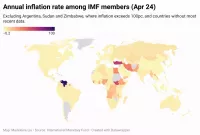
Inflation in economics signifies an increase in the average price...
Iraq officially the Republic of Iraq is a West Asian...
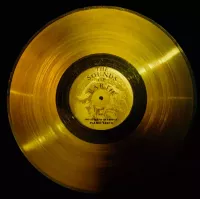
Music is a cultural universal involving the arrangement of sound...
The modern Olympic Games are a leading international sporting event...
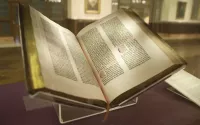
Books are a means of storing information as text or...
Trending
Kelvin Sheppard is an American football coach and former NFL linebacker He is currently the defensive coordinator for the Detroit...
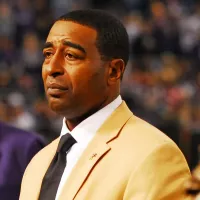
Cris Carter is a former American football wide receiver renowned as one of the greatest in NFL history His career...

23 days ago Jonathan Kuminga Trade Rumors: Warriors, Pacers Considering Deals for Forward.

9 months ago Warriors defeat Bucks as Curry rests; Butler III shines in shocking victory.
2 months ago Wole Soyinka's US Visa Revoked: Nobel Laureate Speaks Out Against Travel Ban.
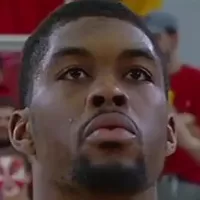
20 days ago Naji Marshall Scores 18 Points and 8 Rebounds in Mavericks Win Against Clippers.
Popular

Ben Shapiro is a prominent American conservative political commentator media...
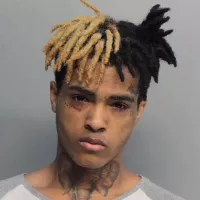
XXXTentacion born Jahseh Dwayne Ricardo Onfroy was a controversial yet...

Candace Owens is an American conservative political commentator and author...

William Franklin Graham III commonly known as Franklin Graham is...
The Kennedy Center Honors are annual awards recognizing individuals and...

Tucker Carlson is an American conservative political commentator known for...
